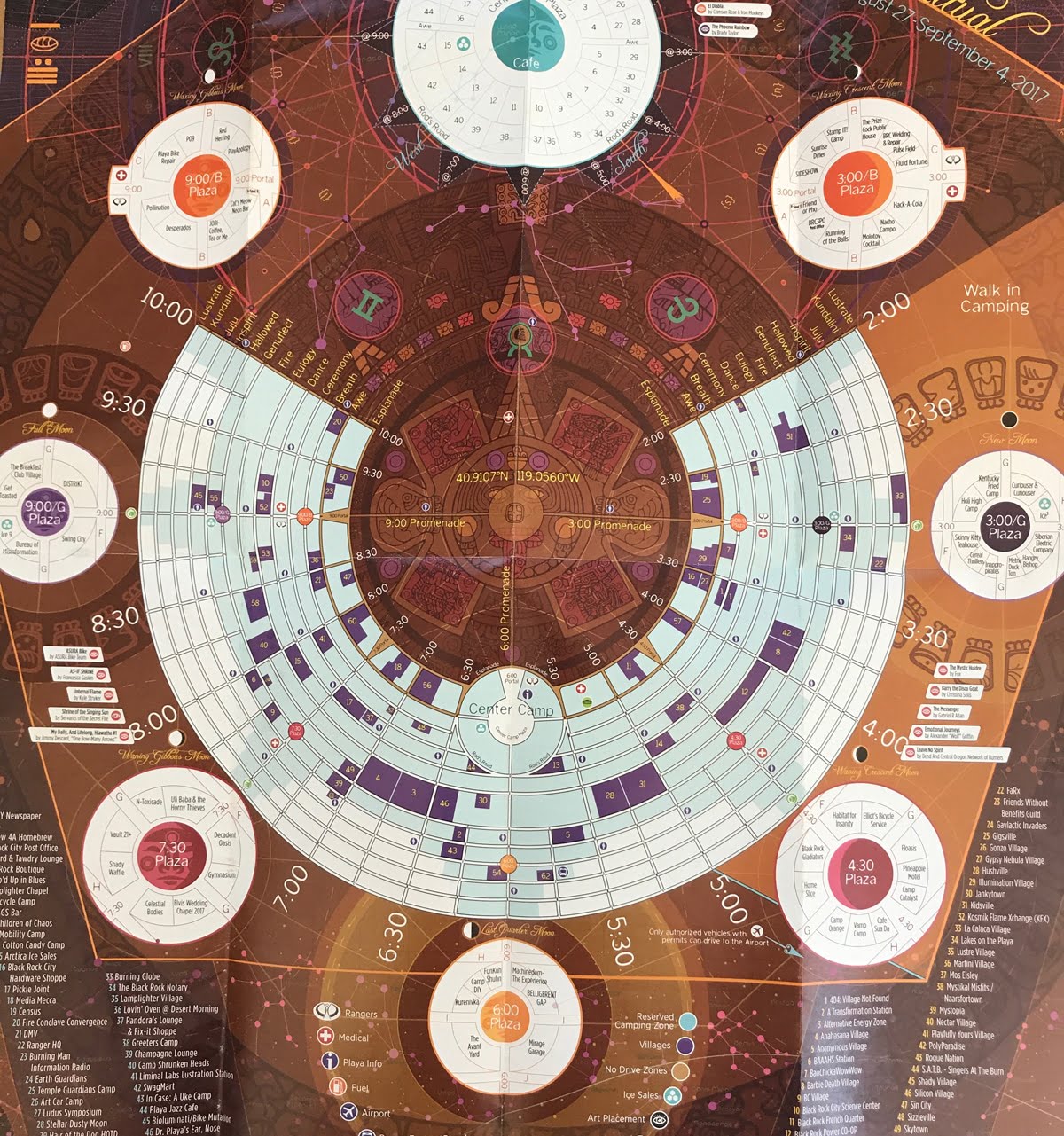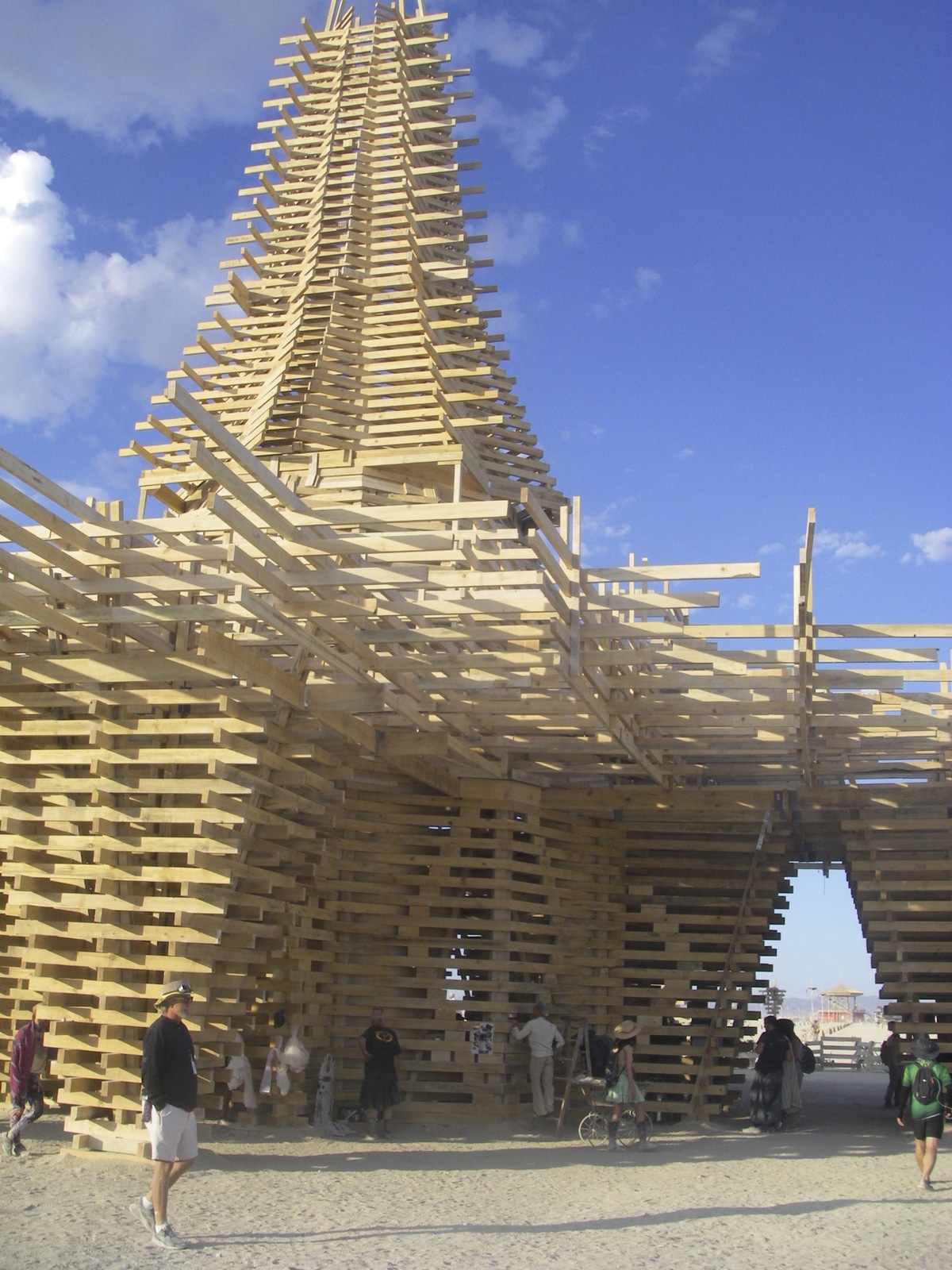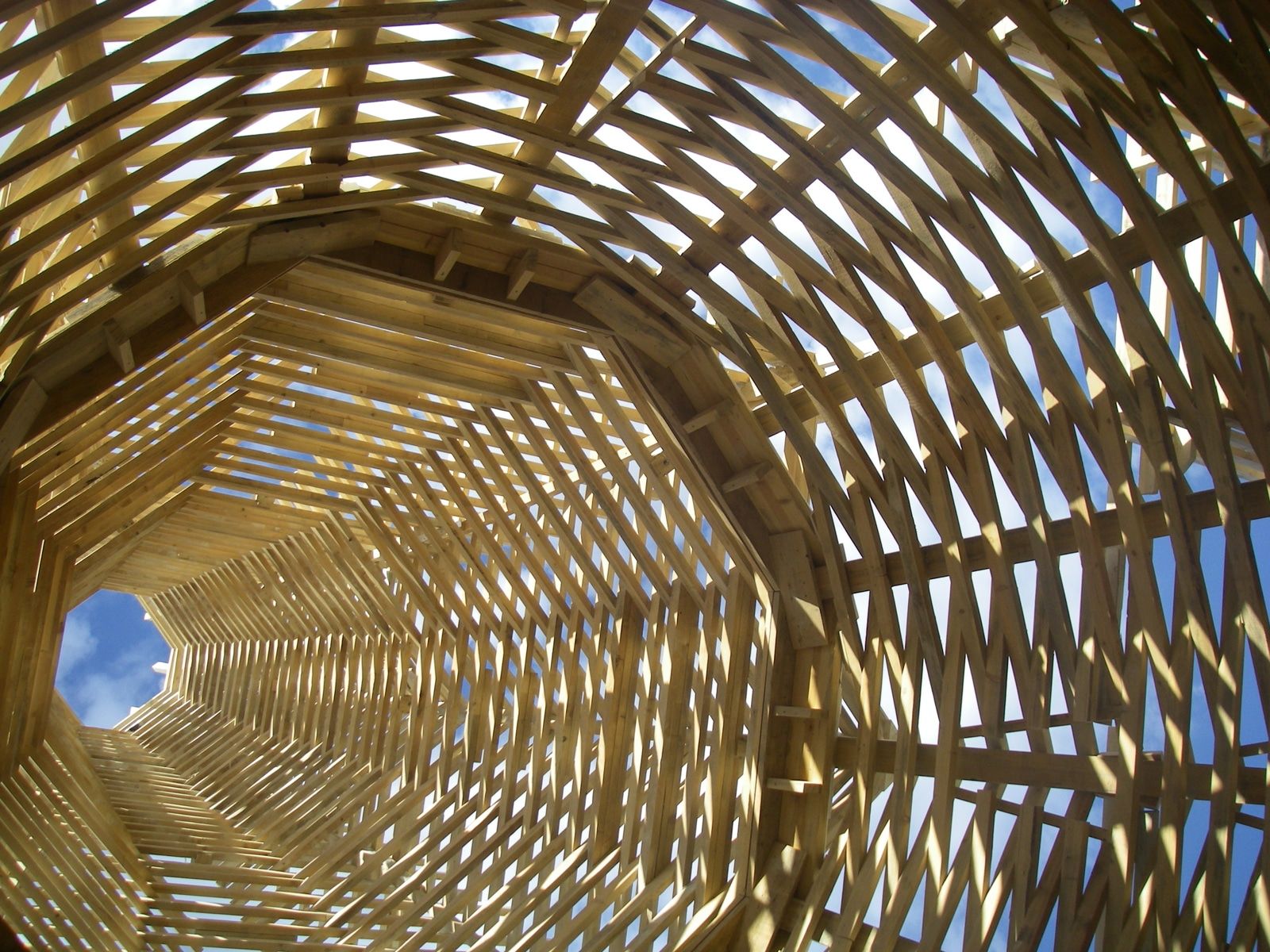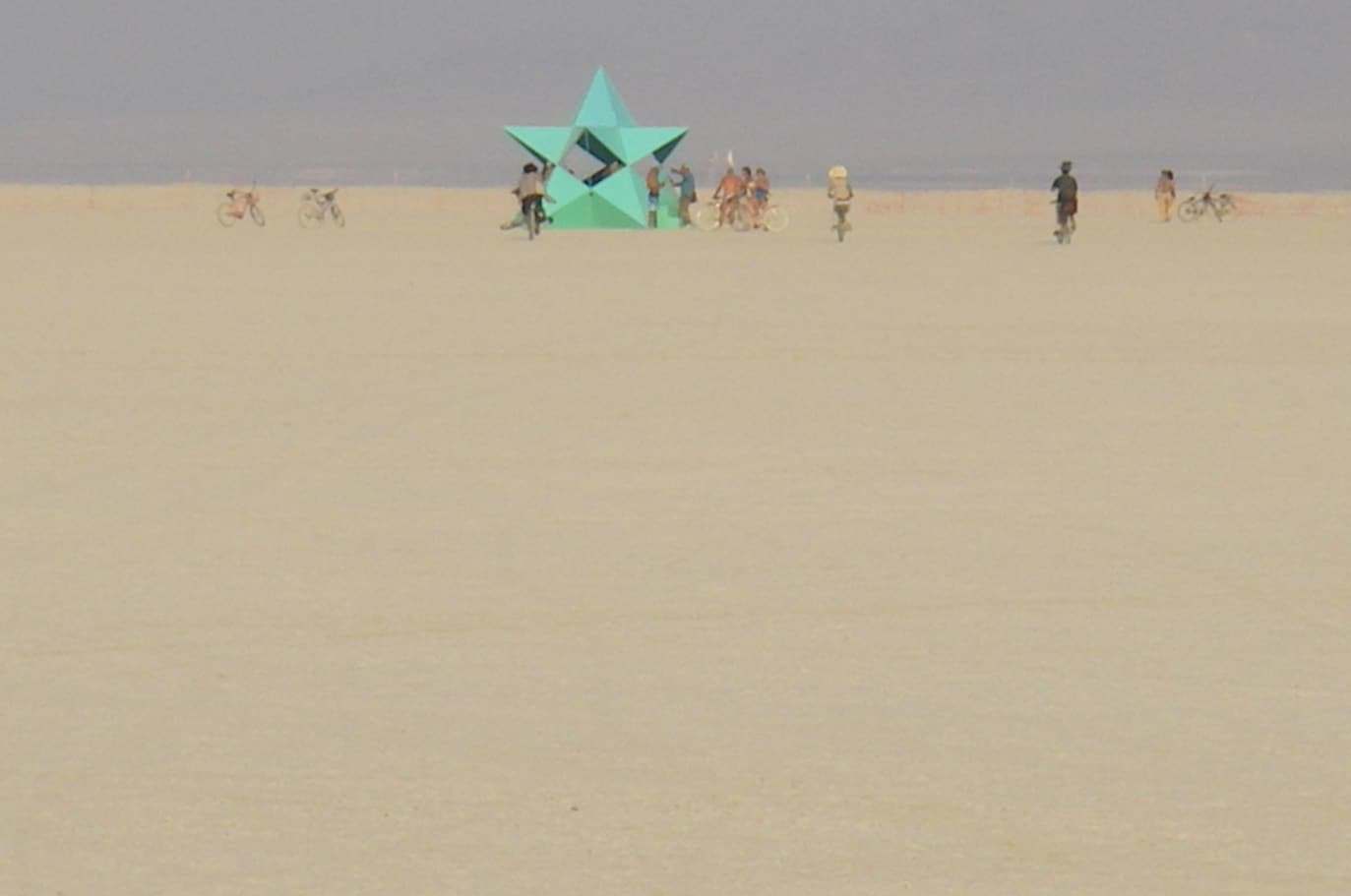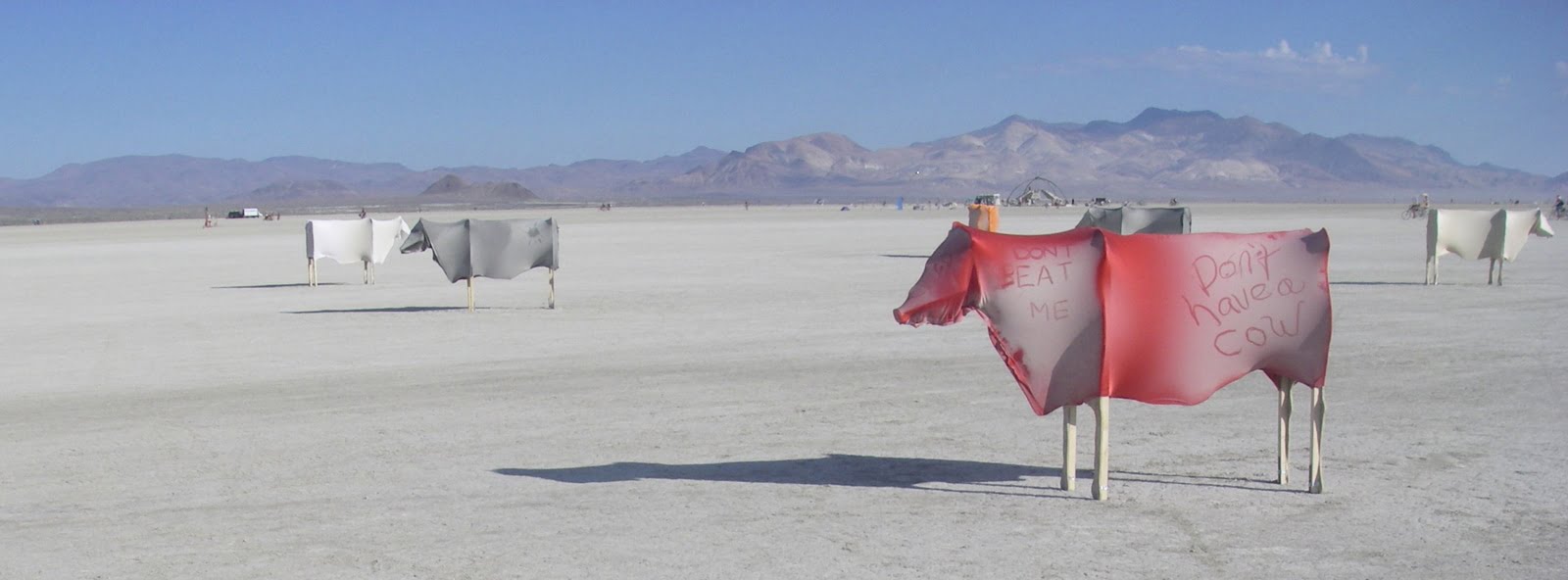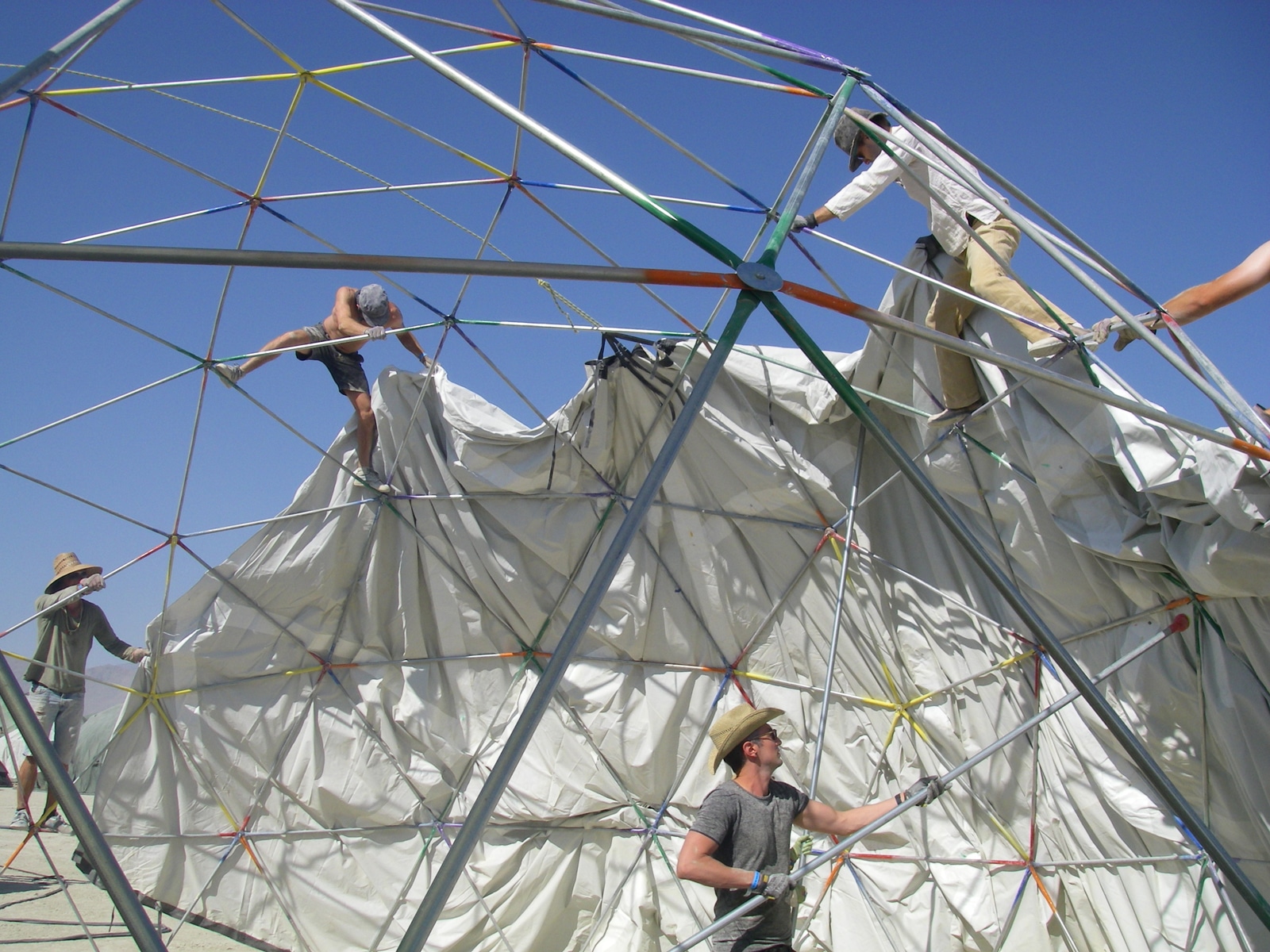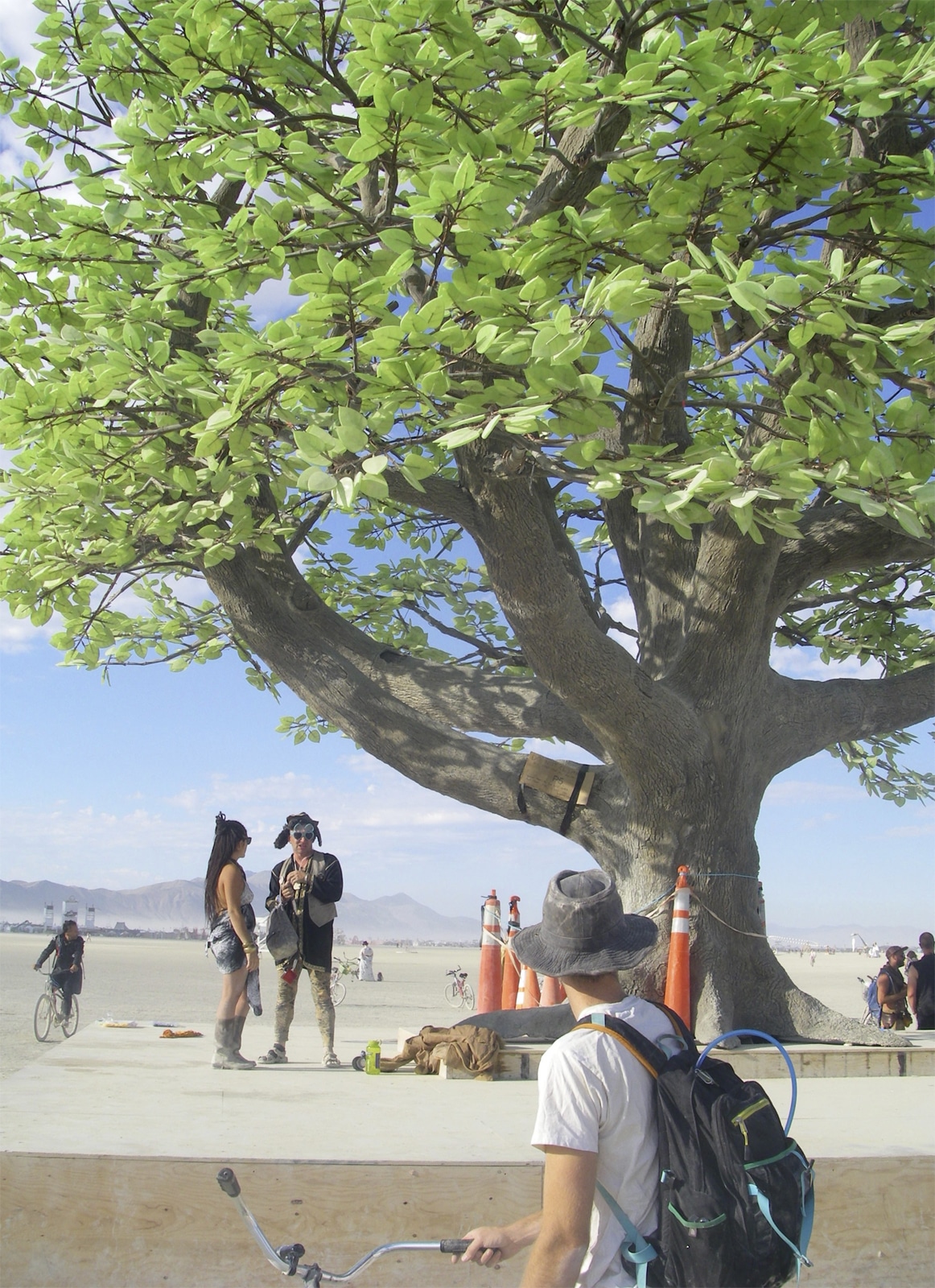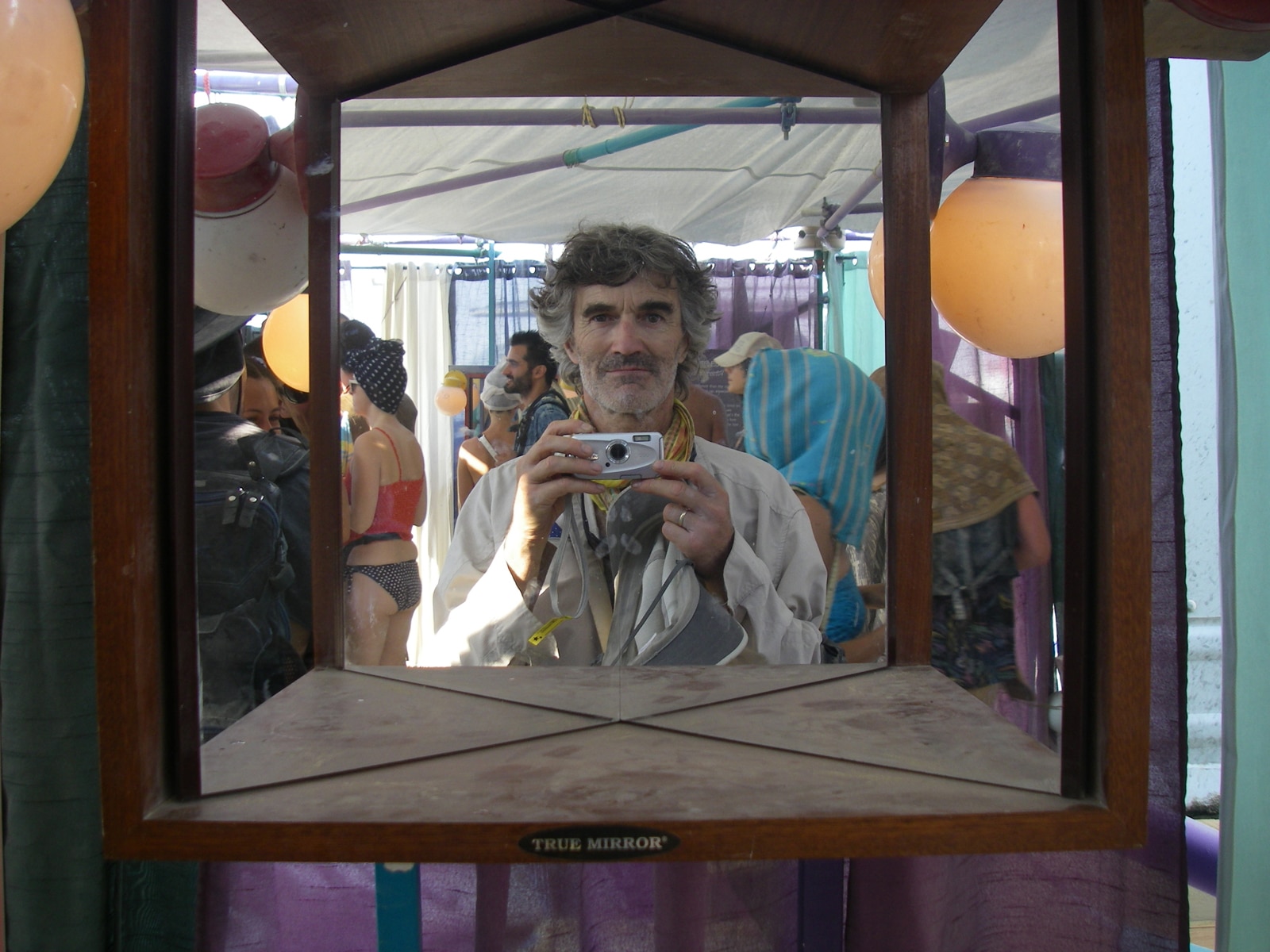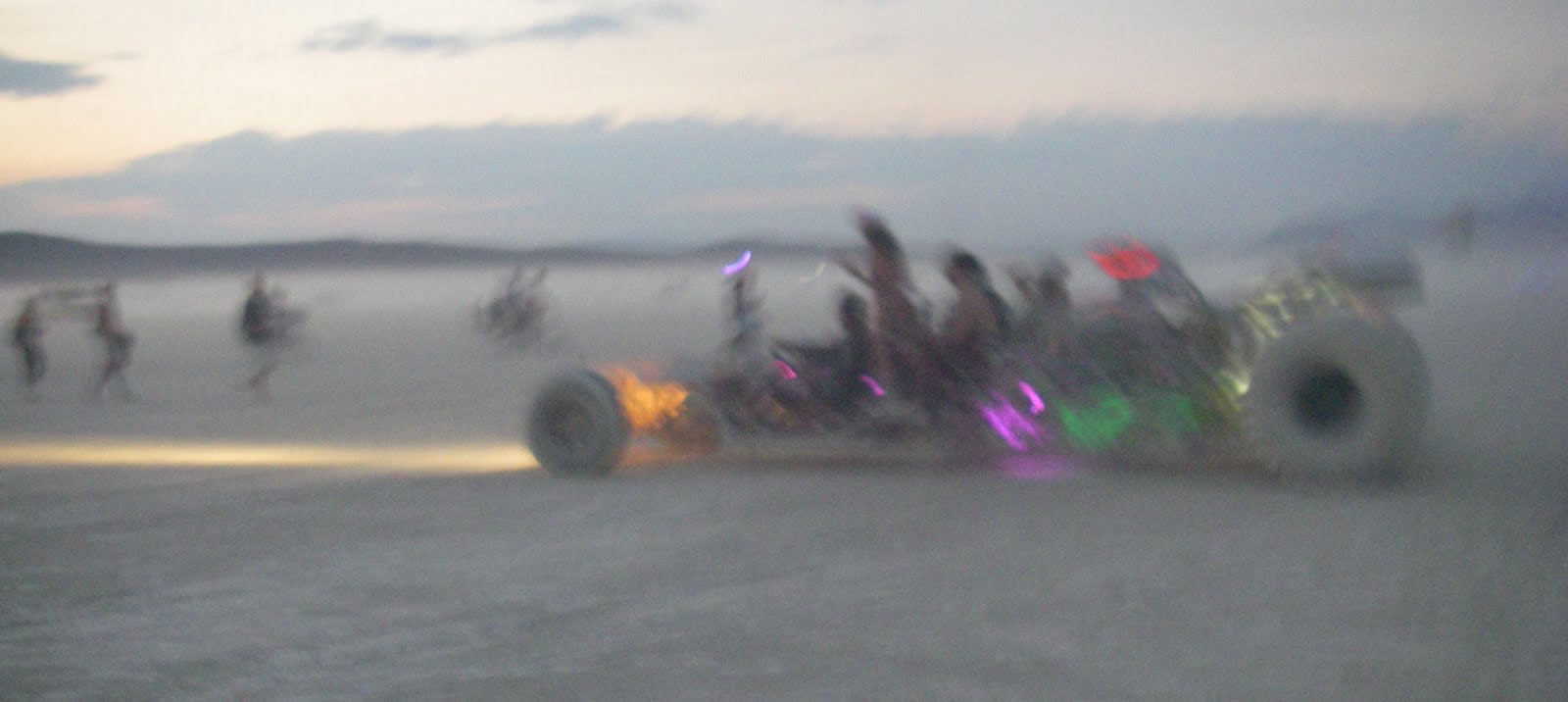Dominique at Burning Man
After some coaxing by family and friends, Dominique attended Burning Man for the first time this year. Our team was very curious to hear about his adventure as a “newbie burner,” and enjoyed his telling so much we thought it should be shared on the blog.
Burning Man takes place annually in the Black Rock Desert of Nevada, at Black Rock City – a city entirely built, then dismantled, around the week-long gathering. Burning Man celebrates the ingenuity, self-reliance, community cooperation, and participation required to co-create a temporary city infrastructure capable of supporting 70,000 participants in the middle of the desert. Woven throughout the built environment of the city, and central to the experience of Burning Man, is the inclusion of site-specific, interactive, visionary, and outsider art, including architecture, performance, installations, and “mutant vehicles.” Each year the event has a theme. In 2017, it was “Radical Ritual.”
Dominique described a feeling of “dépaysement” during his experience – a french word (of course) roughly translating to the sense of disorientation that can result from encountering a totally new and foreign environment.
At Burning Man, the environment provides a radically different context for encountering and experiencing art, compared to traditional museums and galleries. A diversity of art, in all forms and at all scales, is scattered across the central playa, including two colossal wooden constructions, the eponymous Burning Man and the Temple, which reoccur in new variations every year and are burned at the end of the festival. There can be considerable distance between pieces – sometimes a 10 minute bike ride.
The sheer magnitude of the natural landscape dwarfs the art, but also centers it – catching a glimpse of a piece at a distance, and approaching it on bicycle, each piece becomes a specific destination and focus point — in Dominique’s words, it becomes “the only thing that exists anymore.”
In contrast, a traditional museum goer encounters several layers of screening before encountering art – from car, to parking lot, to building, to an enclosed gallery space with several pieces – the experience is both moderated and removed from daily life. At Burning Man art is infrastructure, defining the environment – it is part of the world and open to the world — offering an opportunity for total immersion.
At the end of the week, both the Burning Man and Temple are burned. All artwork and constructions are disassembled and removed, and all participants depart from the desert, “leaving no trace” of the city behind.
Dominique described Burning Man as a hyper “concentrated” experience. He drew a comparison of Burning Man to the recent total solar eclipse (which he witnessed from a mountain in Wyoming): it is in some ways the ephemeral nature of the event that lends it greater value and meaning.
We’ve included some of Dominique’s personal photographs from Burning Man, below:
Gettliffe Architecture is a Boulder, Colorado architecture firm offering green design services from straw-bale homes to eco lodges around the globe. We believe that beautiful modern architectural design begins with careful consideration of earth, culture and community. Working with your ideas and vision, our team of green architects brings inspiring spaces to life that are kind to the planet and a pleasure to be in.



